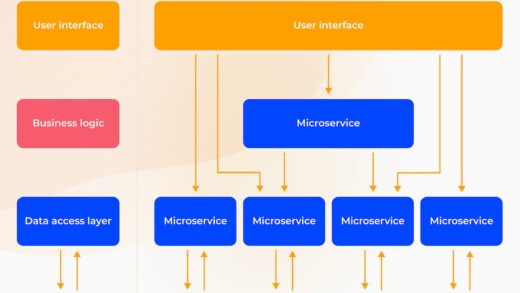User acquisition management is a critical component of any digital marketing strategy. It involves creating and executing a plan for acquiring, engaging, and retaining users for a company’s product or service. It’s an essential part of any successful business, as it helps to ensure that the company’s products are being seen by the right audience and that they are being presented in the most effective way possible.
In this blog post, we’ll look at the basics of user acquisition management and how it can help your business succeed. We’ll explore the benefits, strategies, and tips for acquiring users, and discuss key metrics to track for user acquisition success. Finally, we’ll provide guidance on setting up and managing a user acquisition program.
What is a User Acquisition Manager?
A user acquisition manager is a marketing professional who is responsible for driving user acquisition for a company’s product or service. The user acquisition manager is typically responsible for setting up and managing campaigns, tracking key metrics, and optimizing user acquisition efforts.
User acquisition managers are typically found in digital marketing teams, as they are responsible for developing strategies for acquiring new users. They must be knowledgeable about all aspects of the user acquisition process, from setting up campaigns to analyzing performance data. User acquisition managers must also be well-versed in a range of digital marketing tools and techniques, such as SEO, SEM, and social media.
User acquisition managers are also responsible for tracking key metrics and optimizing campaigns to ensure that the company is acquiring new users at a cost-effective rate. The user acquisition manager must be adept at analyzing data to identify opportunities for improvement and make recommendations for how to improve the user acquisition process.
Benefits of User Acquisition Management
User acquisition management is a critical component of any digital marketing strategy. It helps to ensure that the company’s products are being seen by the right audience and that they are being presented in the most effective way possible. Here are some of the key benefits of user acquisition management:
- Improved user experience: By understanding user behavior and preferences, user acquisition managers can create campaigns that are tailored to the specific needs of the target audience. This leads to better user engagement and more conversions.
- Increased reach: User acquisition managers can create campaigns that reach a wider audience, leading to more potential customers.
- Lower cost per acquisition: By optimizing campaigns and targeting the right users, user acquisition managers can reduce the cost per acquisition, leading to higher ROI.
- Better customer retention: By understanding user behavior and preferences, user acquisition managers can create campaigns that are designed to promote customer loyalty and retention.
Understanding User Acquisition Strategies
User acquisition strategies are the tactics and techniques used to acquire new users. These strategies can vary depending on the product or service, as well as the target audience. Here are some of the most common user acquisition strategies:
- SEO: Search engine optimization (SEO) is the process of optimizing a website to rank higher in search engine results. By optimizing website content and structure, user acquisition managers can improve a website’s visibility and increase the number of users who visit the website.
- Content marketing: Content marketing involves creating and distributing valuable, relevant, and engaging content to attract and retain users. Content marketing can include blog posts, videos, podcasts, infographics, and more.
- Paid advertising: Paid advertising involves running ads on platforms like Google, Facebook, and Instagram. Ads are targeted to users who are most likely to be interested in the product or service being advertised.
- Referral programs: Referral programs involve rewarding existing users for referring new users to the product or service. This is a great way to acquire more users without having to spend money on advertising.
- Social media: Social media is a powerful tool for user acquisition. User acquisition managers can use social media to promote their product or service, engage with potential users, and build relationships with existing users.
Creating an Effective User Acquisition Plan
Creating an effective user acquisition plan is the key to success. To create an effective user acquisition plan, user acquisition managers must have a clear understanding of the user acquisition process and the strategies that will be used to acquire users.
The user acquisition plan should include a detailed analysis of the target audience, a list of strategies that will be used to acquire users, and a timeline for executing the plan. It should also include a budget, tracking and measurement metrics, and a plan for optimizing the user acquisition process.
Building a User Acquisition Funnel
A user acquisition funnel is a series of steps that users take in order to become customers. It is important to understand how users move through the funnel in order to optimize the user acquisition process. The user acquisition funnel typically includes the following steps:
- Awareness: This is the first step in the user acquisition funnel. It involves creating awareness of the product or service.
- Interest: The second step in the user acquisition funnel is to generate interest in the product or service. This can be done through content marketing, social media, and other digital marketing channels.
- Consideration: The third step in the user acquisition funnel is to get users to consider the product or service. This is done through persuasive messaging and calls to action.
- Conversion: The fourth step in the user acquisition funnel is to convert users into customers. This can be done through offers, discounts, and other incentives.
User Acquisition Tips
User acquisition is a complex process, but there are some tips and strategies that user acquisition managers can use to maximize their success. Here are some tips for user acquisition:
- Understand your target audience: It is critical to understand the needs and preferences of the target audience in order to create effective user acquisition campaigns.
- Focus on quality over quantity: It can be tempting to focus on acquiring as many users as possible, but it is important to focus on quality over quantity. High-quality users are more likely to be engaged and more likely to convert.
- Test and optimize: It is important to test different strategies and optimize the user acquisition process to ensure that it is as effective as possible.
- Track key metrics: Tracking key metrics is essential for understanding the performance of user acquisition campaigns and optimizing the process.
- Monitor the competition: It is important to monitor the competition in order to stay ahead of the curve and identify opportunities for improvement.
Key Metrics to Track for User Acquisition
User acquisition managers must track key metrics in order to understand the performance of user acquisition campaigns and optimize the process. The key metrics to track for user acquisition include:
- Cost per acquisition (CPA): This metric measures the cost of acquiring a new user. It is important to track this metric in order to measure the cost-effectiveness of user acquisition campaigns.
- Conversion rate: This metric measures the percentage of users who convert from leads to customers. It is important to track this metric in order to understand the effectiveness of user acquisition campaigns.
- Retention rate: This metric measures the percentage of users who remain active and engaged with the product or service. It is important to track this metric in order to understand the effectiveness of user acquisition campaigns.
- Lifetime value (LTV): This metric measures the total value of each user over their lifetime. It is important to track this metric in order to understand the true value of user acquisition campaigns.
Managing Your User Acquisition Budget
Managing a user acquisition budget is an important part of any user acquisition plan. It is important to set a budget that is realistic and in line with the goals of the user acquisition program. The user acquisition budget should include expenses such as advertising costs, staff costs, and any other costs associated with user acquisition.
It is also important to track user acquisition spending in order to understand the performance of user acquisition campaigns and optimize the budget accordingly. User acquisition managers should track key metrics such as cost per acquisition and conversion rate in order to ensure that the budget is being used effectively.
Setting Up a User Acquisition Program
Setting up a user acquisition program is the key to success. It is important to have a clear understanding of the user acquisition process and the strategies that will be used to acquire users. User acquisition managers should create a detailed user acquisition plan that includes a timeline, budget, tracking and measurement metrics, and a plan for optimizing the user acquisition process.
Once the user acquisition program is set up, it is important to track key metrics such as cost per acquisition and conversion rate in order to understand the performance of user acquisition campaigns and optimize the process. Additionally, user acquisition managers should monitor the competition in order to stay ahead of the curve and identify opportunities for improvement.
Conclusion
User acquisition management is a critical component of any digital marketing strategy. It involves creating and executing a plan for acquiring, engaging, and retaining users for a company’s product or service. It’s an essential part of any successful business, as it helps to ensure that the company’s products are being seen by the right audience and that they are being presented in the most effective way possible.
When it comes to user acquisition, it is important to understand the user acquisition process and the strategies that will be used to acquire users. Additionally, user acquisition managers should create a detailed user acquisition plan that includes a timeline, budget, tracking and measurement metrics, and a plan for optimizing the user acquisition process. It is also important to track key metrics such as cost per acquisition and conversion rate in order to understand the performance of user acquisition campaigns and optimize the process.
By understanding the basics of user acquisition management and following the tips and strategies outlined in this blog post, user acquisition managers can create effective user acquisition plans and campaigns that will help their business succeed.









